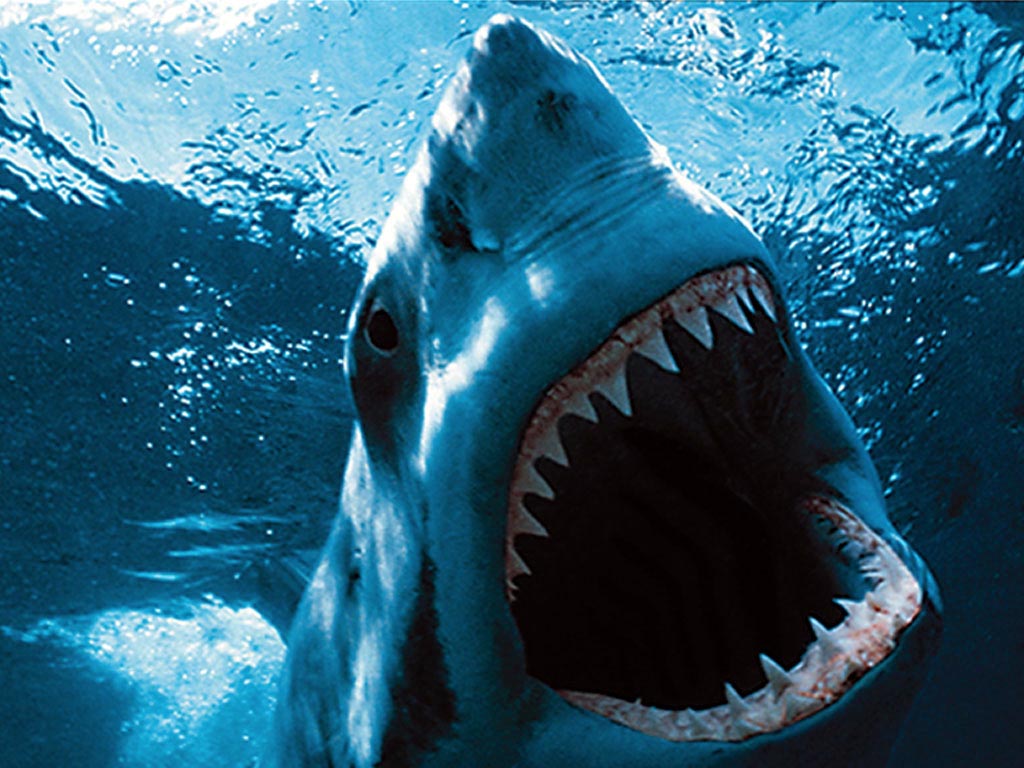The bizarre shape of the head is thought to make the shark more sensitive to electrical signals, which they use to detect hidden prey.
Statistics
Females average 3.65m and males 2.85m, but the largest specimen recorded was 6.10m.
Physical Description
Great hammerheads are a dark olive colour with a pale underside. They have a hammer-shaped head, with eyes positioned at the end of each extension. Hammerheads have triangular, serrated teeth. The dorsal fin (on the back) is very large and pointed.
Habitat
Great hammerheads inhabit shallow reefs and are found at moderate depths offshore in all tropical waters worldwide. They can sometimes be found in water less than 1m deep.
Diet
Great hammerheads are solitary, unlike scalloped hammerheads, and feed on other small sharks, rays (including sting rays), squid and bony fish. They are considered to be dangerous and attacks on humans have been documented.
Reproduction
Females give birth to 20-40 live pups which are about 70cm long at birth.
Conservation status
Great hammerheads are not considered to be endangered although they are hunted for sport and for their skin, which is used as leather.



